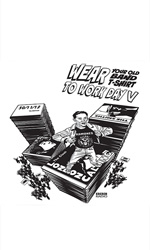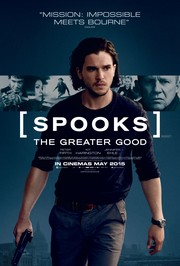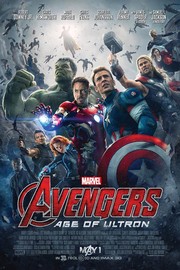Culture continues to be contested and struggles free of being pinned down because it belongs to no one. We have our own culture / cultures which we are a part of but it is continually evolving.
So many lifestyles, attitudes, art forms and social activities have used the word culture in describing their beliefs, actions and pastimes, that it is now commonly used. The ‘music culture’, ‘football culture’, ‘film culture’, ‘pub culture’, ‘theatre culture’ and so on.
It uses many references in its make – up, from ‘High Art’, to ‘Popular Culture’ and ‘Mass Culture’. The first labelling of any activities or beliefs or expression was called ‘High Art’, Culture with a capital C. The opera, the classics, fine paintings and the aristocracy came under this term. Matthew Arnold’s book Culture and Anarchy (1869) was the first real breakthrough in actually looking at culture. He was a schools inspector, poet and literary critic. He was fearful of the utilitarian system and also terrified of the working class at the time (organised socialism in the 1800’s). He rallied for culture to be taught in education.
He wanted cultural democracy, ”to make the best that has been taught or known in the world current everywhere” (1). He argued for social cohesion, about social unrest and the fact that culture transcended gender, class, religion and race. That everybody has the right to enlightenment, that the role of the institution is ”…for carrying from one end of society to the other, the best knowledge, the best ideas of their time…”(2). His ideology being that through education there would be some sort of state / social control. The concern for control was because society was becoming increasingly non – religious. If control was not coming from the pulpit then it had to come from elsewhere. This train of thought was continued with F R Leavis, it was called Liberal Humanism.
As Arnold championed ‘High Culture’, Leavis was for developing ‘aesthetic capability’ in education. English Literature to replace Classic Languages, Poetry and a ‘cannon of authors’ to be studied and the curriculum to be vested in ‘High Culture’. He spoke out against ‘standardization’ and ‘mass production’ and the devaluing these processes can bring.
Problems started to be noted in the Liberal Humanism approach because it was blind to the inequalities that structure our society – class, sexism, racism and disability. People whose lives dealt with these inequalities were not going to receive the ”… sweetness and light” (3) of these teachings on the same scale as those whose lives didn’t.
A reaction against ‘High Culture’ teaching principles started to occur after the 1950’s. Due to changes in industrialisation and the influence of mass production the grip of ‘High Culture’ was slowly being challenged. There came a new school of critics ‘The Culturists’, key ones being Raymond Williams, Richard Hoggart and E P Thompson. These were from working class backgrounds and began to question the Liberal Humanism attitude.
Williams spoke of culture in the context of where and what. His definition of culture being what people do with their daily life. Hoggart and Williams highlighted popular song and popular fiction of the time as being ‘cultural’. The growth in popular music (Rock n’ Roll), the birth of the teenager (Teddy Boys), were some examples of new ‘cultures’ used by these critics. Hoggarts book The Uses of Literacy (1957) looked at the connections in public culture from pubs / working men’s clubs, magazines and sports and the structures of everyday life in family, gender relations, language and the communities ”common sense”. Graeme Turner in his book British Cultural Studies – An Introduction
(1990) called it ”the books most significant achievement” (4).
Williams first book Culture and Society (1958) reflected the connection of ”…his two major interests – literary analysis and social inquiry” (5) and it as been a major influence on the development of cultural studies. This new analysis of culture by these new critics was termed Popular Culture. In his second book The Long Revolution
(1961) Williams shifts his attention to cultural institutions, their ideologies and mass media product. Institutions such as education (schools, colleges, universities) the family and mass media (newspaper, TV, radio).
The continued movement – evolvement and casting off of any anchoring chains on culture, would allow argument on the differences that occur in Hoggarts perception of ‘Popular Culture’ and Williams perception. Take Williams’s quote on culture being ”a whole way of life, material, intellectual and spiritual” (6), his experiences come from rural village life in Wales, then onto university, the army and adult education. Hoggarts beginnings are in a city – Leeds. So you would have the difference of rural culture and city culture. So even when there are similar beliefs there is still the individual ‘culture’ difference.
A mass culture change in a country can cause drastic and dire consequences, the peoples identity can become dislocated. East Berlin is a good example where some people grew up in a National Socialist (Nazi) culture, to then be taken over by Communism, then to re – start again as part of the capitalist west. Culture and history give us our identity.
Culture is forever challenging and changing, answering questions and then asking new ones, identifying the mass but seeking out the marginal as well.
Reference Notes
(1) Arnold, M. (org 1869, 1932) Culture and Anarchy
, in McGuigan, J. (1992) Cultural Populism
, p21.
(2) Arnold, M. (org 1869) Culture and Anarchy, on www.library.utoronto.ca/utel/
(3) Arnold, M (org 1869) Culture and Anarchy, on www.library.utoronto.ca/utel/
(4) Turner, G. (org 1990, 1992) British Cultural Studies – An Introduction, p48.
(5) Turner, G. (org 1990, 1992) British Cultural Studies – An Introduction, p53.
(6) Williams, R. (org 1958, 1993) Culture and Anarchy, p,xvi.
Copyright
Copyright Gary O’Dea 1999 – not to be copied or used without the permission of Copyright holder.

























Categories: Lifestyle | Author: Gary O'Dea | Leave a comment